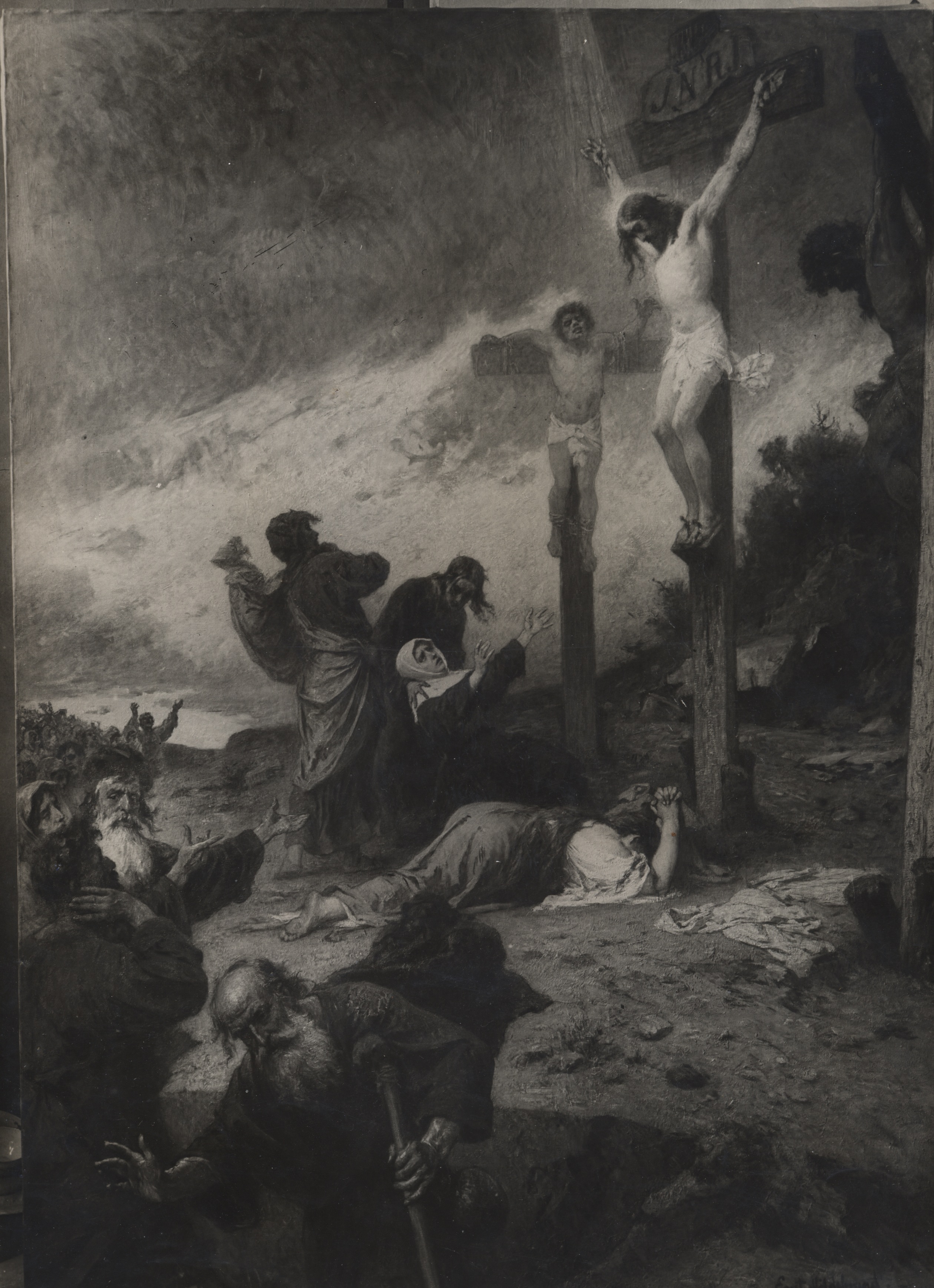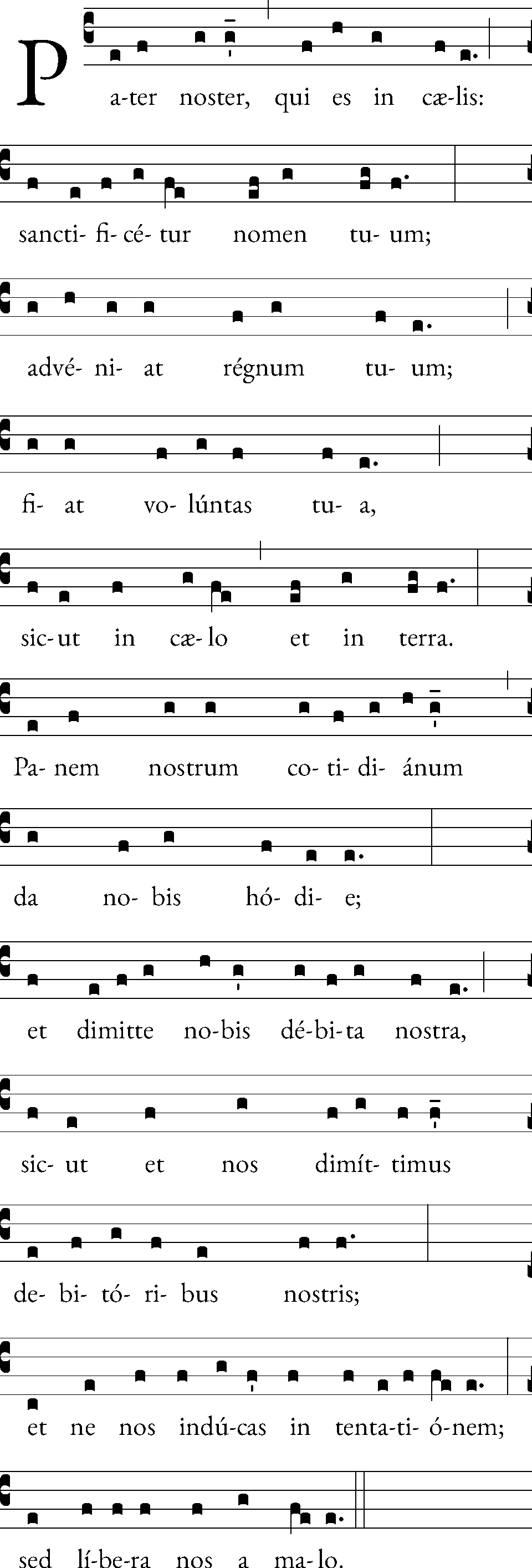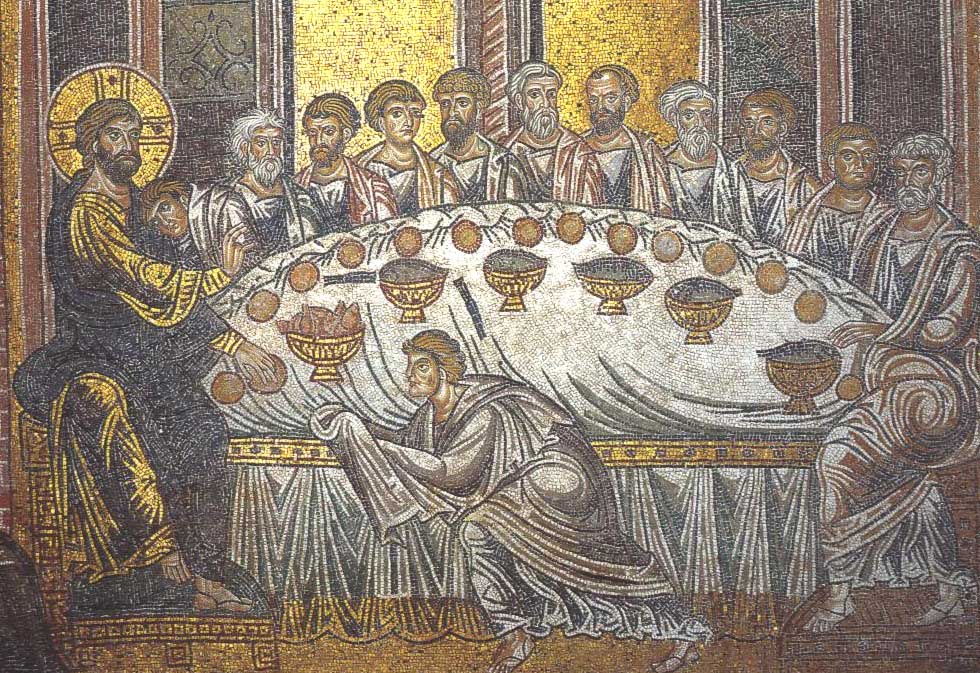|
Criterion Of Independent Attestation
The criterion of multiple attestation, also called the criterion of independent attestation or the cross-section method, is a tool used by Biblical scholars to help determine whether certain actions or sayings by Jesus in the New Testament are from the Historical Jesus. Simply put, the more independent witnesses that report an event or saying, the better. This criterion was first developed by F. C. Burkitt in 1906, at the end of the first quest for the historical Jesus. Description The gospels are not always independent of each other. Matthew and Luke, for example, are likely dependent on Mark. The ''criterion of multiple attestation'' focuses on the sayings or deeds of Jesus that are attested to in more than one independent literary source such as Mark, Paul, Q, M, L, John, Josephus, or Thomas.John P. Meier, A Marginal Jew: Rethinking the Historical Jesus, Volume IV: Law and Love', Yale University Press, 2009. The force of this criterion is increased if a given motif or the ... [...More Info...] [...Related Items...] OR: [Wikipedia] [Google] [Baidu] |
Biblical Criticism
Modern Biblical criticism (as opposed to pre-Modern criticism) is the use of critical analysis to understand and explain the Bible without appealing to the supernatural. During the eighteenth century, when it began as ''historical-biblical criticism,'' it was based on two distinguishing characteristics: (1) the concern to avoid dogma and bias by applying a neutral, non-sectarian, reason-based judgment to the study of the Bible, and (2) the belief that the reconstruction of the historical events behind the texts, as well as the history of how the texts themselves developed, would lead to a correct understanding of the Bible. This sets it apart from earlier, pre-critical methods; from the anti-critical methods of those who oppose criticism-based study; from the post-critical orientation of later scholarship; and from the multiple distinct schools of criticism into which it evolved in the late twentieth and early twenty-first centuries. The emergence of biblical criticism is ... [...More Info...] [...Related Items...] OR: [Wikipedia] [Google] [Baidu] |
Josephus On Jesus
Flavius Josephus was a first-century Jewish historian who provided external information on some people and events found in the New Testament. Josephus was a general in Galilee, which is where Jesus ministered and people who knew him still lived; he dwelled near Jesus's hometown of Nazareth for a time, and kept contact with groups such as the Sanhedrin and Ananus II who were involved in the trials of Jesus and his brother James. The extant manuscripts of Josephus' book ''Antiquities of the Jews'', written , contain two references to Jesus of Nazareth and one reference to John the Baptist. The first and most extensive reference to Jesus in the ''Antiquities'', found in wikisource:The Antiquities of the Jews/Book XVIII#Chapter 3, Book 18, states that Jesus was the Messiah and a wise teacher who was crucified by Pontius Pilate. It is commonly called the '. Though nearly all modern scholars hold that the passage, in its present form, cannot be authentic; most nevertheless hold that it ... [...More Info...] [...Related Items...] OR: [Wikipedia] [Google] [Baidu] |
Pontius Pilate
Pontius Pilate (; ) was the Roman administration of Judaea (AD 6–135), fifth governor of the Judaea (Roman province), Roman province of Judaea, serving under Emperor Tiberius from 26/27 to 36/37 AD. He is best known for being the official who presided over Pilate's court, the trial of Jesus and ultimately ordered crucifixion of Jesus, his crucifixion. Pilate's importance in Christianity is underscored by his prominent place in both the Apostles' Creed, Apostles' and Nicene Creeds. Because the gospels portray Pilate as reluctant to execute Jesus, the Ethiopian Orthodox Tewahedo Church believes that Pilate became a Christian and venerates him as both a martyr and a saint, a belief which is historically shared by the Coptic Orthodox Church, Coptic Church, with a Calendar of saints, feast day on 19 or 25 June, respectively. Pontius Pilate is the best-attested figure to hold the position of Roman governor, though few sources about his rule have survived. Virtually nothing is known ... [...More Info...] [...Related Items...] OR: [Wikipedia] [Google] [Baidu] |
Crucifixion Of Jesus
The crucifixion of Jesus was the death of Jesus by being crucifixion, nailed to a cross.The instrument of Jesus' crucifixion, instrument of crucifixion is taken to be an upright wooden beam to which was added a transverse wooden beam, thus forming a "cruciform" or T-shaped structure. It occurred in 1st-century Roman Judaea, Judaea, most likely in AD 30 or AD 33. The event is described in the four canonical gospels, referred to in the New Testament epistles, and later attested to by #Other accounts and references, other ancient sources. Scholars nearly universally accept the Historicity of Jesus, historicity of Jesus's crucifixion, although there is no consensus on the details.Christopher M. Tuckett in ''The Cambridge companion to Jesus'' edited by Markus N. A. Bockmuehl 2001 Cambridge Univ Press pp. 123–124 According to the canonical gospels, Jesus was Arrest of Jesus, arrested and Sanhedrin trial of Jesus, tried by the Sanhedrin, and then Pilate's court, sentenced by ... [...More Info...] [...Related Items...] OR: [Wikipedia] [Google] [Baidu] |
Lord's Prayer
The Lord's Prayer, also known by its incipit Our Father (, ), is a central Christian prayer attributed to Jesus. It contains petitions to God focused on God’s holiness, will, and kingdom, as well as human needs, with variations across manuscripts and Christian traditions. Two versions of this prayer are recorded in the gospels: a longer form within the Sermon on the Mount in the Gospel of Matthew, and a shorter form in the Gospel of Luke when "one of his disciples said to him, 'Lord, teach us to pray, as John taught his disciples. Scholars generally agree that the differences between the Matthaean and Lucan versions of the Lord’s Prayer reflect independent developments from a common source. The first-century text '' Didache'' (at chapter VIII) reports a version closely resembling that of Matthew and the modern prayer. It ends with the Minor Doxology. Theologians broadly view the Lord’s Prayer as a model that aligns the soul with God’s will, emphasizing praise, tr ... [...More Info...] [...Related Items...] OR: [Wikipedia] [Google] [Baidu] |
1 Corinthians 7
The First Epistle to the Corinthians () is one of the Pauline epistles, part of the New Testament of the Christian Bible. The epistle is attributed to Paul the Apostle and a co-author, Sosthenes, and is addressed to the Christian church in Corinth. Scholars believe that Sosthenes was the amanuensis who wrote down the text of the letter at Paul's direction.Meyer, H. A. W. (1880)Meyer's NT Commentaryon 1 Corinthians 1, translated from the German sixth edition, ''BibleHub'', accessed May 17, 2022 It addresses various issues which had arisen in the Christian community at Corinth and is composed in a form of Koine Greek. Despite the name, it is not believed to be the first such letter written to the Corinthian church. Authorship There is a consensus among historians and theologians that Paul is the author of the First Epistle to the Corinthians, with Sosthenes as its co-author. Protestant commentator Heinrich Meyer notes that Sosthenes' inclusion in the opening wording shows that ... [...More Info...] [...Related Items...] OR: [Wikipedia] [Google] [Baidu] |
Luke 16
Luke 16 is the sixteenth chapter of the Gospel of Luke in the New Testament of the Christian Bible. It records the teachings and parables of Jesus Christ, including the account of the " rich man and Lazarus".Halley, Henry H. ''Halley's Bible Handbook'': an Abbreviated Bible Commentary. 23rd edition. Zondervan Publishing House. 1962. There is an "overriding concern with riches" in this chapter, although other topics are also covered. The book containing this chapter is anonymous, but early Christian tradition uniformly affirmed that Luke the Evangelist composed this Gospel as well as the Acts of the Apostles.Holman Illustrated Bible Handbook. Holman Bible Publishers, Nashville, Tennessee. 2012. Text The original text was written in Koine Greek. Some early manuscripts containing the text of this chapter are: * Papyrus 75 (AD 175–225) * Codex Vaticanus (325–350) * Codex Sinaiticus (330–360) * Codex Bezae (~400) * Codex Washingtonianus (~400) * Codex Alexandrinus (400–440). ... [...More Info...] [...Related Items...] OR: [Wikipedia] [Google] [Baidu] |
Mark 10
Mark 10 is the tenth chapter of the Gospel of Mark in the New Testament of the Christian Bible. It presents further teachings of Jesus as his journey progresses beyond the River Jordan and towards Jerusalem. Verses 1–31 deal with the themes of marriage, children and possessions, while verses 31–52 look ahead again to Jesus' passion and true service, and conclude with a further healing of a blind man, comparable to a similar healing in Mark 8.Tuckett, C. M., ''57. Mark'', in Barton, J. and Muddiman, J. (2001)The Oxford Bible Commentary/ref> Text The original text was written in Koine Greek. This chapter is divided into 52 verses. Textual witnesses Some early manuscripts containing the text of this chapter are: * Codex Vaticanus (325–350; complete) * Codex Sinaiticus (330–360; complete) * Codex Bezae (~400; complete) * Codex Alexandrinus (400–440; complete) * Codex Ephraemi Rescriptus (~450; complete) Location At the beginning of the chapter, Jesus and His disciples ... [...More Info...] [...Related Items...] OR: [Wikipedia] [Google] [Baidu] |
1 Corinthians 11
The First Epistle to the Corinthians () is one of the Pauline epistles, part of the New Testament of the Christian Bible. The epistle is attributed to Paul the Apostle and a co-author, Sosthenes, and is addressed to the Christian church in Corinth. Scholars believe that Sosthenes was the amanuensis who wrote down the text of the letter at Paul's direction.Meyer, H. A. W. (1880)Meyer's NT Commentaryon 1 Corinthians 1, translated from the German sixth edition, ''BibleHub'', accessed May 17, 2022 It addresses various issues which had arisen in the Christian community at Corinth and is composed in a form of Koine Greek. Despite the name, it is not believed to be the first such letter written to the Corinthian church. Authorship There is a consensus among historians and theologians that Paul is the author of the First Epistle to the Corinthians, with Sosthenes as its co-author. Protestant commentator Heinrich Meyer notes that Sosthenes' inclusion in the opening wording shows t ... [...More Info...] [...Related Items...] OR: [Wikipedia] [Google] [Baidu] |
Mark 14
Mark 14 is the fourteenth chapter of the Gospel of Mark in the New Testament of the Christian Bible. It contains the plot to kill Jesus, his anointing by a woman, the Last Supper, predictions of his betrayal, and Peter the Apostle's three denials of him. It then begins the Passion of Jesus, with the garden of Gethsemane and Judas Iscariot's betrayal and Jesus' arrest, followed by Jesus' trial before the Sanhedrin and Peter's denials of Jesus. Having 72 verses, this is the longest chapter in Mark's Gospel. The Gospel of Matthew's chapter which covers the same material, Matthew 26, has 75 verses. This chapter's material is presented somewhat differently in Luke 22, which has 71 verses. Jesus' arrest at Gethsemane, his trial, and Peter's denials are found in John 18:1–27. Text The original text was written in Koine Greek. Textual witnesses Some early manuscripts containing the text of this chapter are: *Codex Vaticanus (325–350; complete) *Codex Sinaiticus (330–360; ... [...More Info...] [...Related Items...] OR: [Wikipedia] [Google] [Baidu] |
Last Supper
Image:The Last Supper - Leonardo Da Vinci - High Resolution 32x16.jpg, 400px, alt=''The Last Supper'' by Leonardo da Vinci - Clickable Image, ''The Last Supper (Leonardo), The Last Supper'' (1495-1498). Mural, tempera on gesso, pitch and mastic, 700 x 880 cm (22.9 x 28.8 ft). In the Santa Maria delle Grazie, Milan, Santa Maria delle Grazie Church, Milan, Italy, it is Leonardo da Vinci's dramatic interpretation of Jesus' last meal before death. Depictions of the Last Supper in Christian art have been undertaken by artistic masters for centuries, Leonardo da Vinci's late-1490s mural painting, being the best-known example. ''(Clickable image—use cursor to identify.)'' poly 550 2550 750 2400 1150 2300 1150 2150 1200 2075 1500 2125 1525 2300 1350 2800 1450 3000 1700 3300 1300 3475 650 3500 550 3300 450 3000 Bartholomew the Apostle, Bartholomew poly 1575 2300 1625 2150 1900 2150 1925 2500 1875 2600 1800 2750 1600 3250 1425 3100 1400 2800 1375 2600 James, son of Alphaeus, James Min ... [...More Info...] [...Related Items...] OR: [Wikipedia] [Google] [Baidu] |
Kingdom Of God
The concept of the kingship of God appears in all Abrahamic religions, where in some cases the terms kingdom of God and kingdom of Heaven are also used. The notion of God's kingship goes back to the Hebrew Bible, which refers to "his kingdom" but does not include the term "Kingdom of God". The "Kingdom of God" and its equivalent form Kingdom of Heaven (Gospel of Matthew), "Kingdom of Heaven" in the Gospel of Matthew is one of the key elements of the teachings of Jesus in the New Testament. The Gospel of Mark indicates that the gospel is the good news about the Kingdom of God. The term pertains to the Christ the King, kingship of Christ over all creation. The phrase "Kingdom of heaven" appears in Matthew's gospel due primarily to Jewish sensibilities about uttering the "name" (God). Jesus did not teach the kingdom of God ''per se'' so much as the ''return'' of that kingdom. The notion of God's kingdom (as it had been under Moses) returning became an agitation in Roman Palestin ... [...More Info...] [...Related Items...] OR: [Wikipedia] [Google] [Baidu] |








